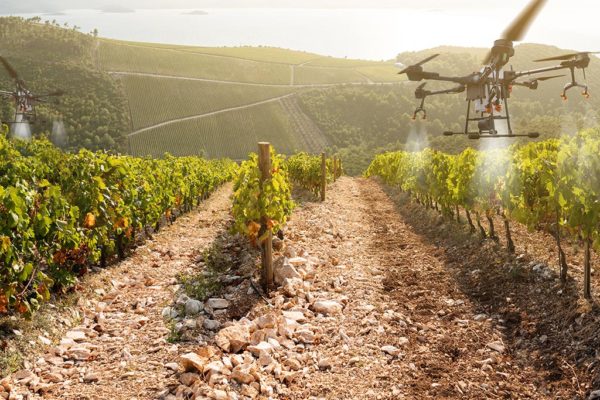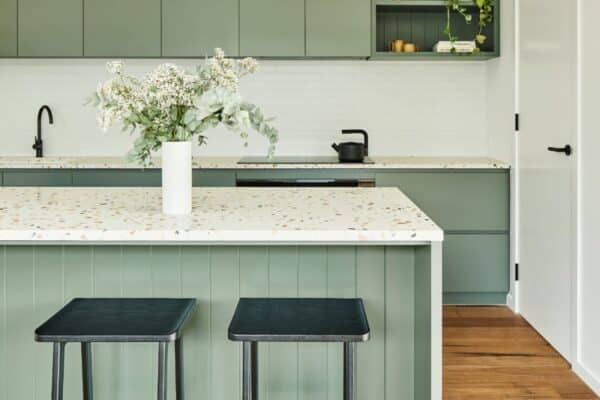For a long time, the standard suburban backyard has followed the same formula:
Neatly trimmed lawns, a few ornamental plants, and maybe a veggie patch if you’re feeling ambitious. But our backyards, while tidy, generally don’t offer much to the wildlife that once thrived in them.
Instead of designing gardens for looks alone, rewilding (regenerating and creating a habitat garden) asks us to work with nature. Planting with purpose, inviting wildlife back in, and creating small pockets of habitat in the places we live.
And yes, it’s something you can absolutely do at home.
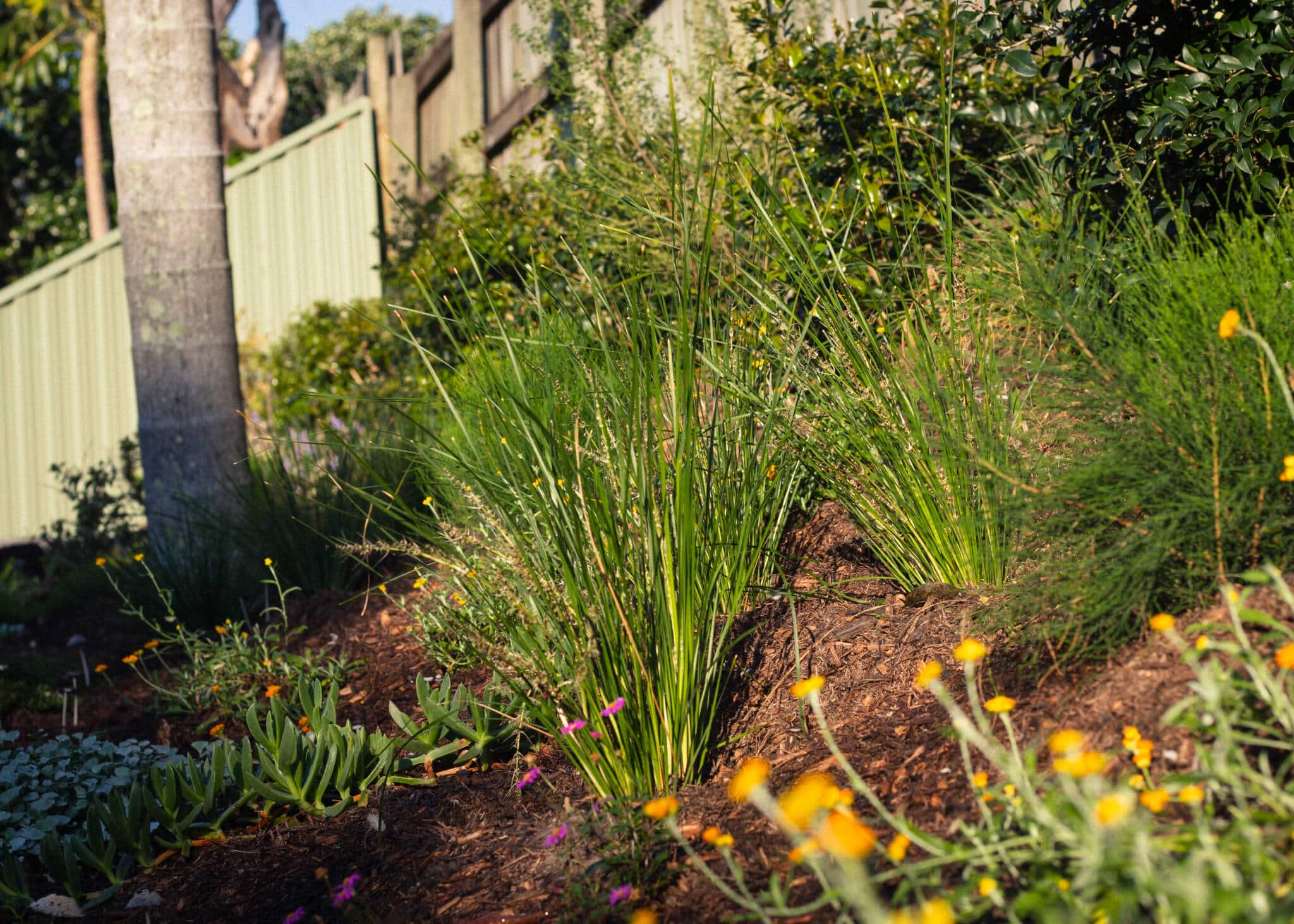
What is Rewilding? And why should we do it?
Rewilding, at its core, is about encouraging native plants and wildlife to return to areas that have been heavily managed or altered by human activity.
The rewilding movement (which we tend to call habitat gardening in Australia) is fairly new to most of us when it comes to suburban spaces and backyards. Typical Australian backyards are an expanse of green lawns edged with low-maintenance ornamentals. Lovely to look at, but mostly lacking in biodiversity.
But we should also remember that Indigenous peoples have been living on and caring for Country for tens of thousands of years. Relationships built on observation, understanding, and care. We have a lot to learn from this.
By reintroducing native, indigenous, and endemic plants to our backyards, we’re helping to create new spaces that support local wildlife.
Over time encouraging birds, insects, and other essential species to return. In turn, creating microhabitats in the form of gardens that restore food chains and pollination networks, as well as help to cool our suburbs and improve soil health, which are crucial for a healthy environment.
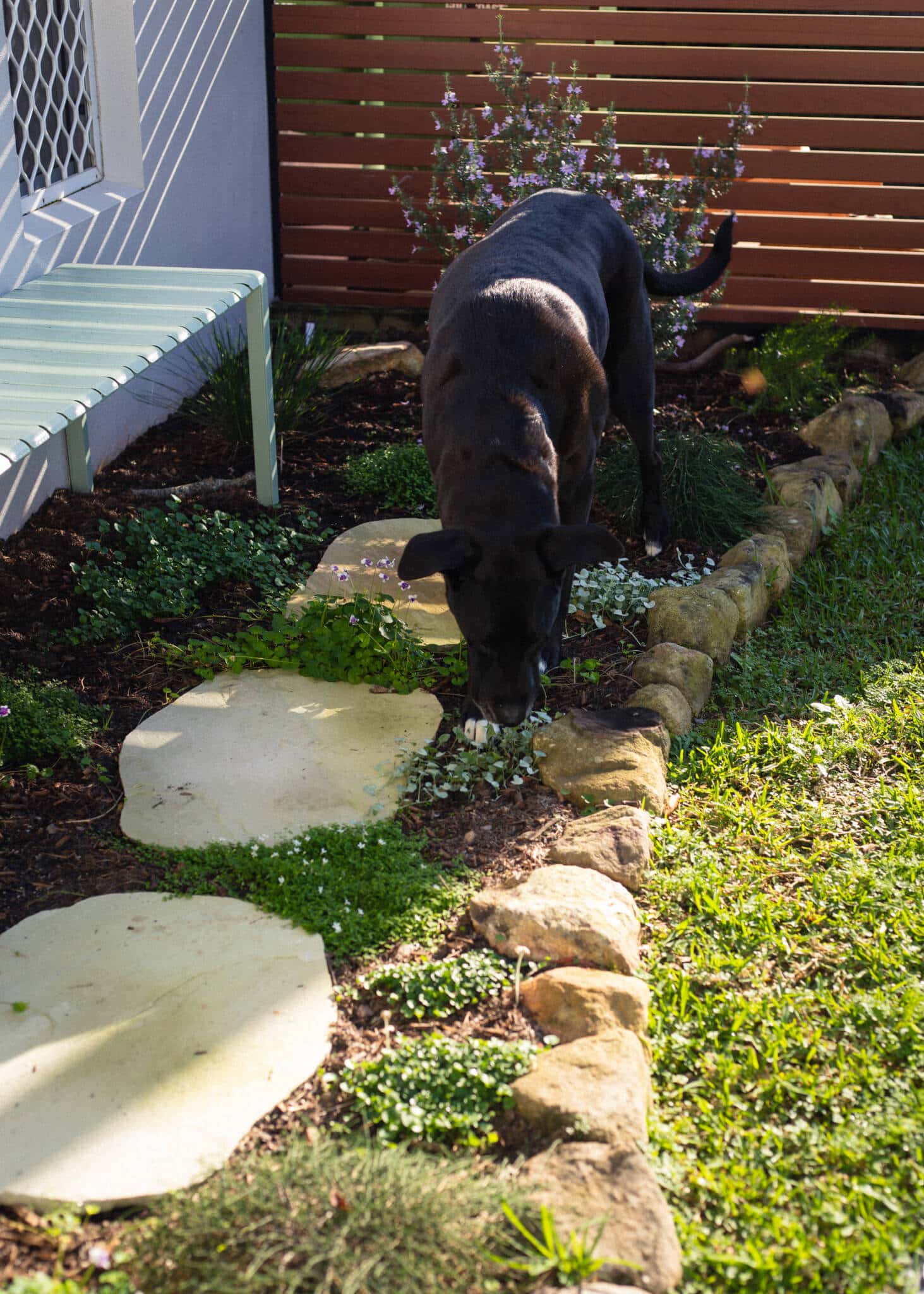
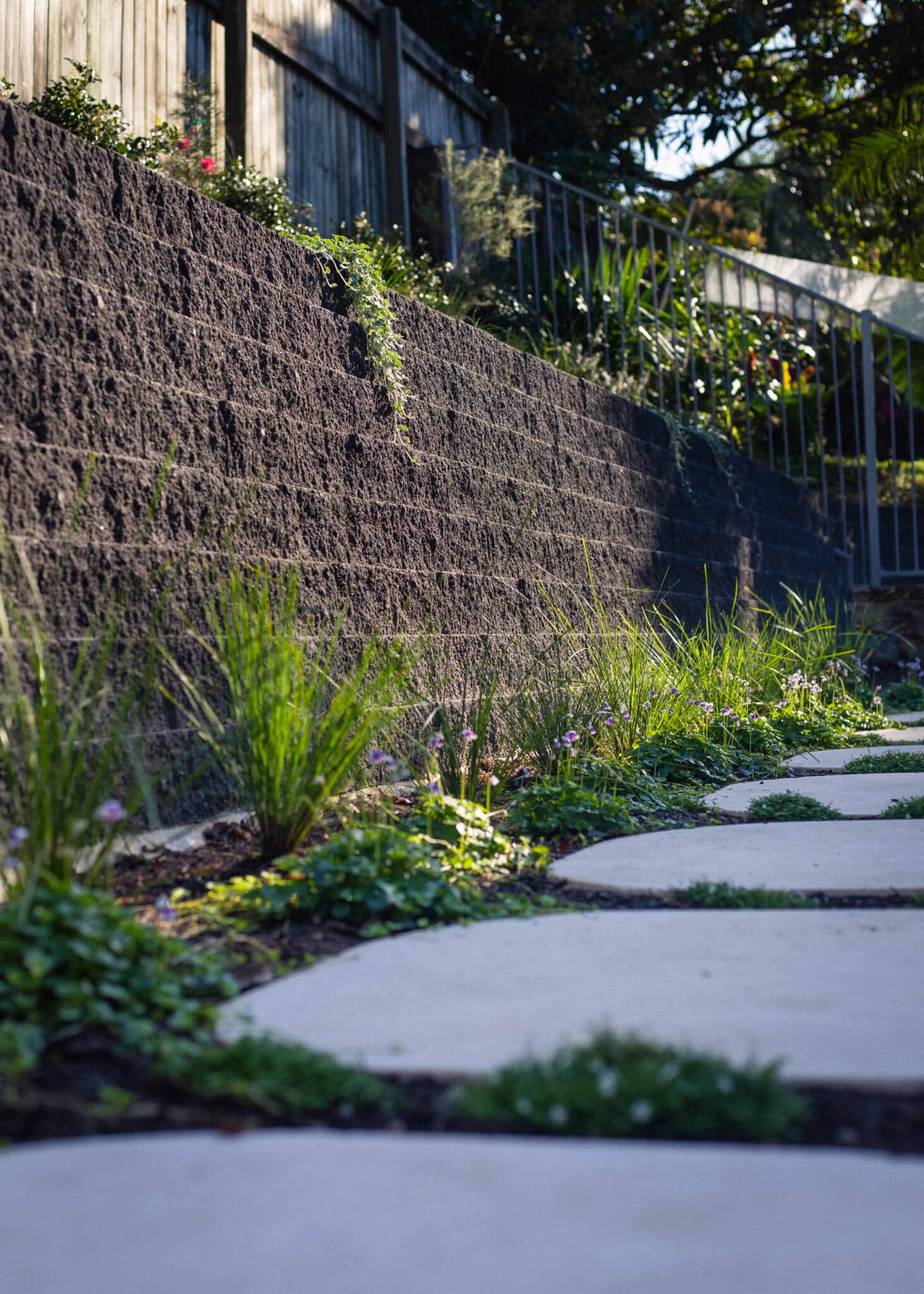
Above: Two small areas in my backyard. Creating a micro garden along the edge and replacing the lawn with ground covers.
Does your garden size matter?
When it comes to rewilding, not at all.
Before moving to my own home, where I started Project Rewild My Backyard, I took my first steps and learnt in my rental property.
It began with a mini pollinator garden, filled with lavender, rosemary, and butterfly bush. I stopped using pesticides and insecticides, and the grass became dotted with tiny yellow oxalis and clover flowers. I added flowering natives in pots along the edge of the lawn. Phebalium, Myoporum, Grevillea and Plectranthus, a banquet for the local blue-banded bees.
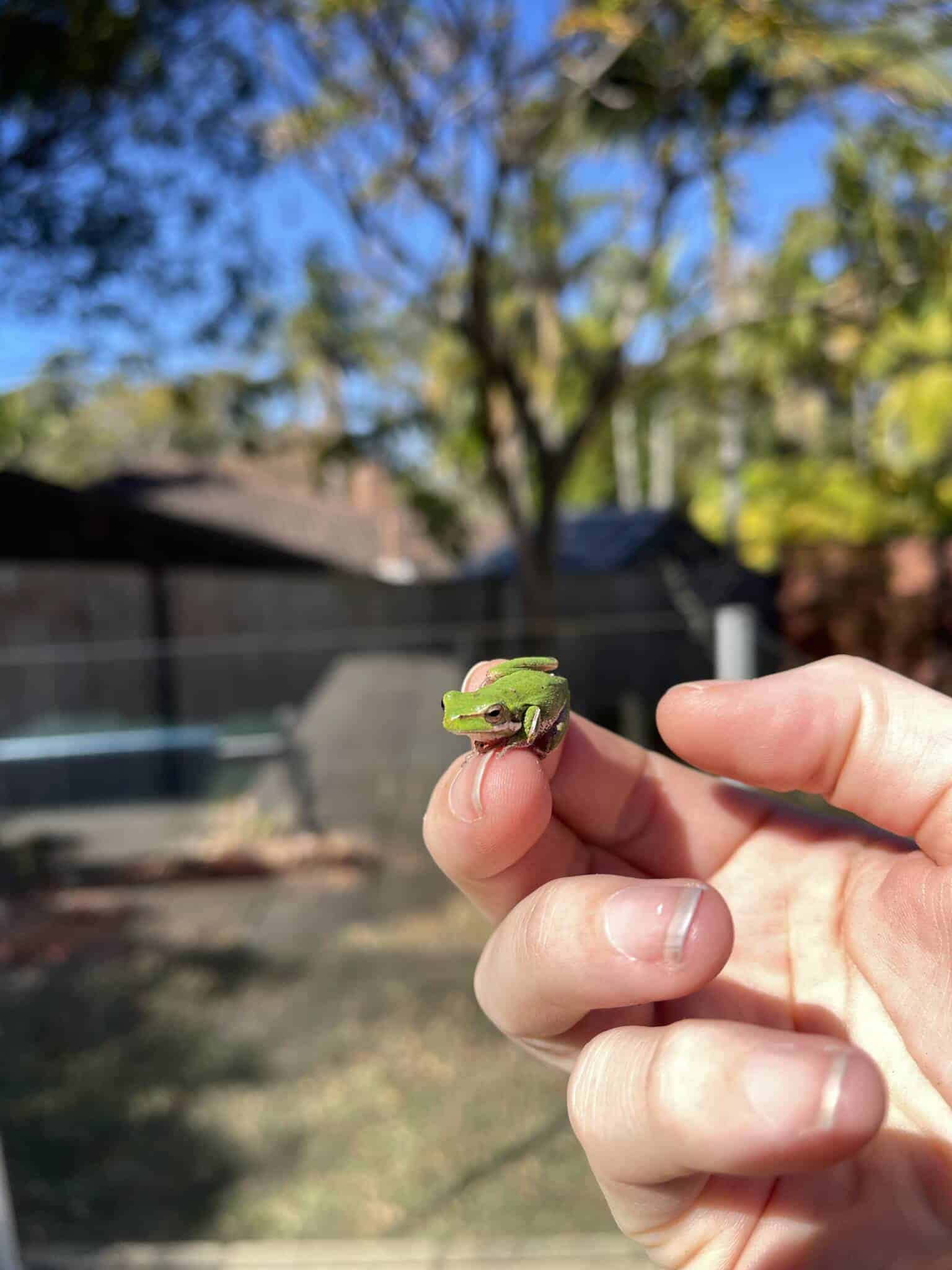
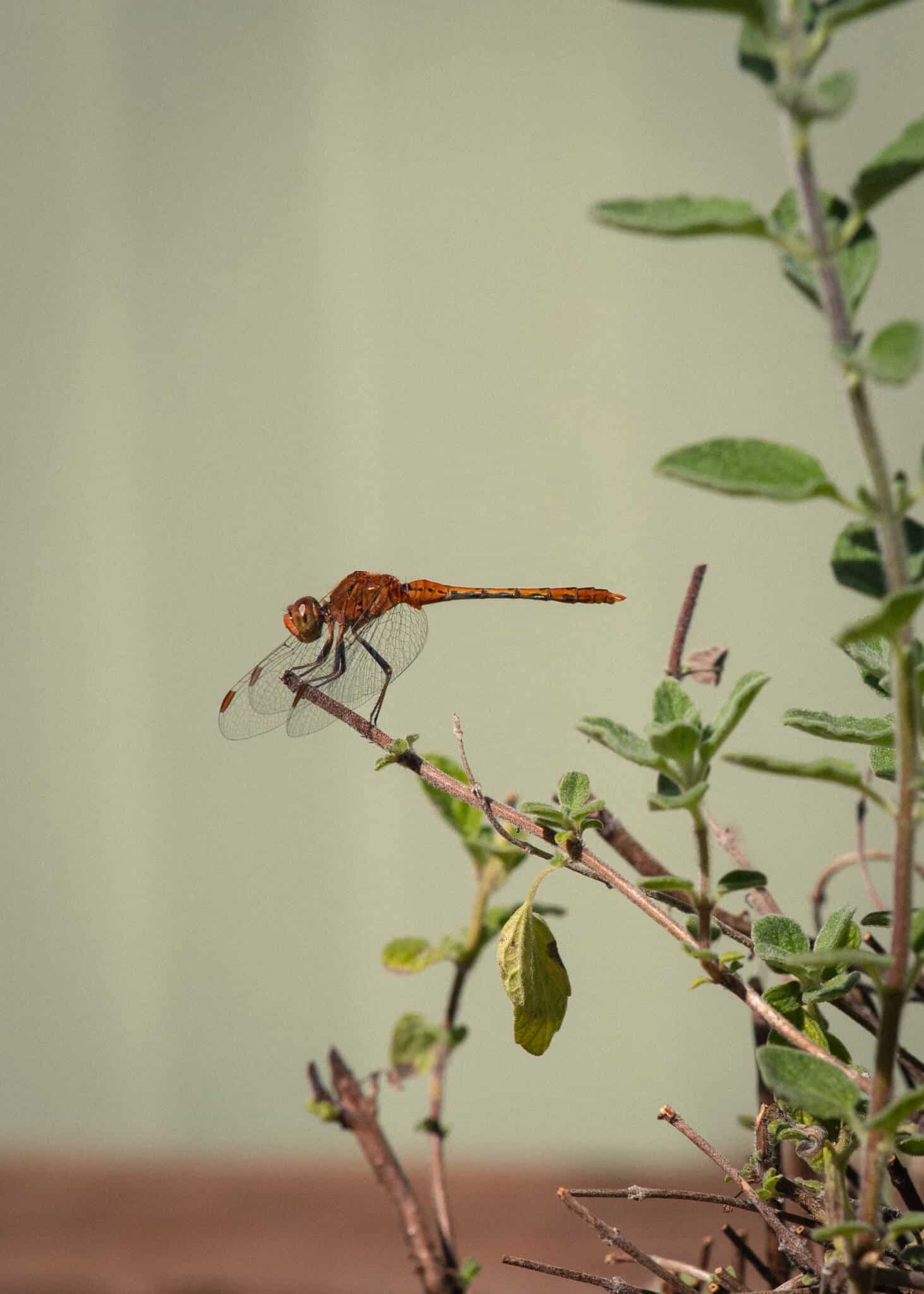
Over time, the backyard filled with native stingless bees, a variety of butterflies, tiny assassin bugs, lady beetles, and dragonflies. A pair of magpie larks, a family trio of butcher birds, and currawongs occasionally drop by to help themselves to the vines of cherry tomatoes. Skinks, geckoes, green tree frogs, even a blue-tongue lizard – that garden was a bustling hub of biodiversity.
Rewilding your backyard can be your whole block or a few square metres along the edge. For townhouses and apartments, it could be raised beds or a balcony garden. The space you choose to rewild can be any size or shape based on what you have.
What’s important is that we all offer a space that contributes to the greater whole. Even the smallest of gardens can provide a habitat for wildlife.
Imagine if more of us embarked on backyard (or balcony) rewilding journeys. More people across the country creating spaces interwoven with native biodiversity, each garden a piece of a larger, thriving ecosystem. Now imagine the collective impact it would have.
If you’re reading this and don’t have a large backyard, I don’t want you to be discouraged before you even start. Gardens come in all shapes and sizes, and native plants can thrive even in some of the most unlikely places.
Are you ready to get started?
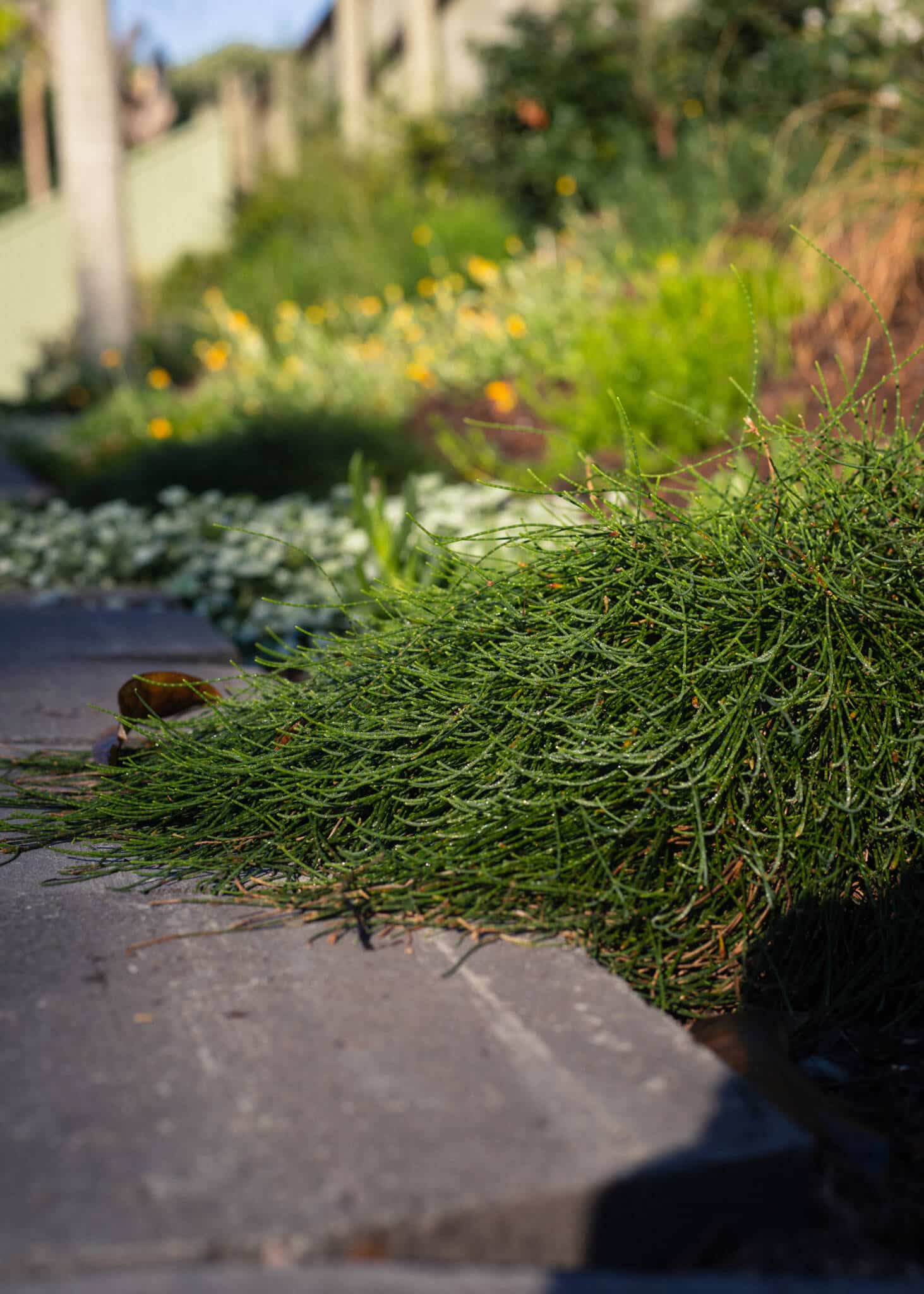
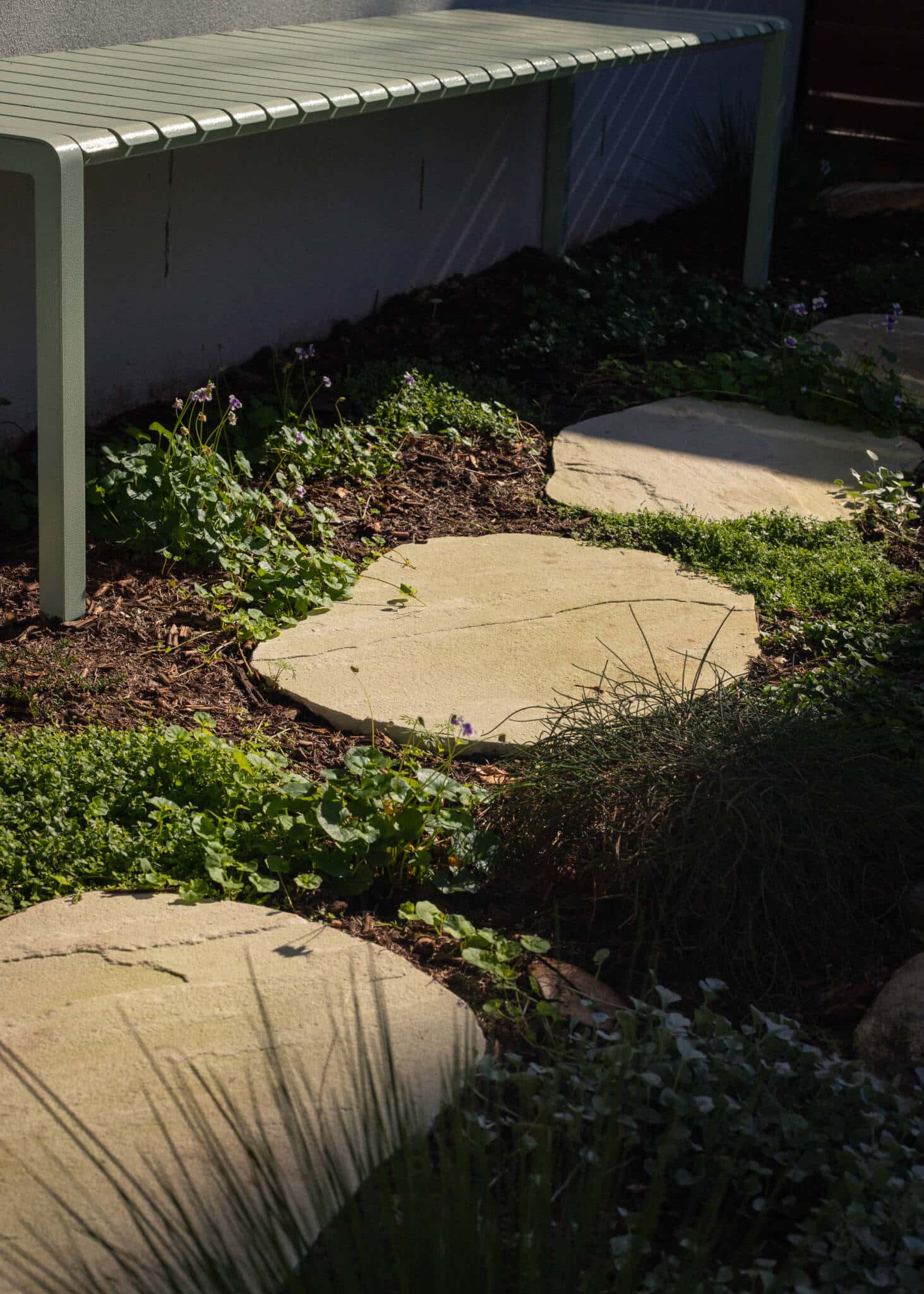
1. Say No to Pesticides and Insecticides
While it’s tempting to reach for that bottle of spray to deal with pests or pesky bindies, please resist!
Pesticides might get rid of insects you don’t want, but they also harm beneficial ones like bees, ladybeetles, and butterflies. As well as the tiny but crucial inhabitants of our soils.
To encourage biodiversity in your garden and pest control, you first need to create a healthy ecosystem.
This starts with stopping the use of pesticides and insecticides. Your garden will be happier, and so will the wildlife. Once your soil and garden is healthy and free from synthetic chemicals, the insects and bird life will thrive. A biodiverse garden will, in time, manage itself within its own food web.
Managing weeds is also a tedious task, and there’s no quick fix, I’m afraid.
- Thick layers of mulch in your garden beds will help.
- Planting ground covers such as Pratia pedunculata and Viola hederacea can help keep weeds at bay.
- Boiling water poured over weeds in concrete cracks will help them die off in a few days and make them easier to pull out.
- For manual weed removal, I’m a big fan of these two tools. This stand-up weed puller and this Garden Weeder.
And remember, a few weeds and holes in your plants won’t ruin the overall beauty of your backyard. It’s a sign that your garden is full of life.
Actionable Tip: Start by identifying common garden pests and learning about their natural predators. For example, aphids can be managed by introducing ladybirds, while slugs and snails can be deterred by creating a habitat for frogs and lizards. Create “bug hotels” with old wood, leaves, and sticks to encourage beneficial insects.
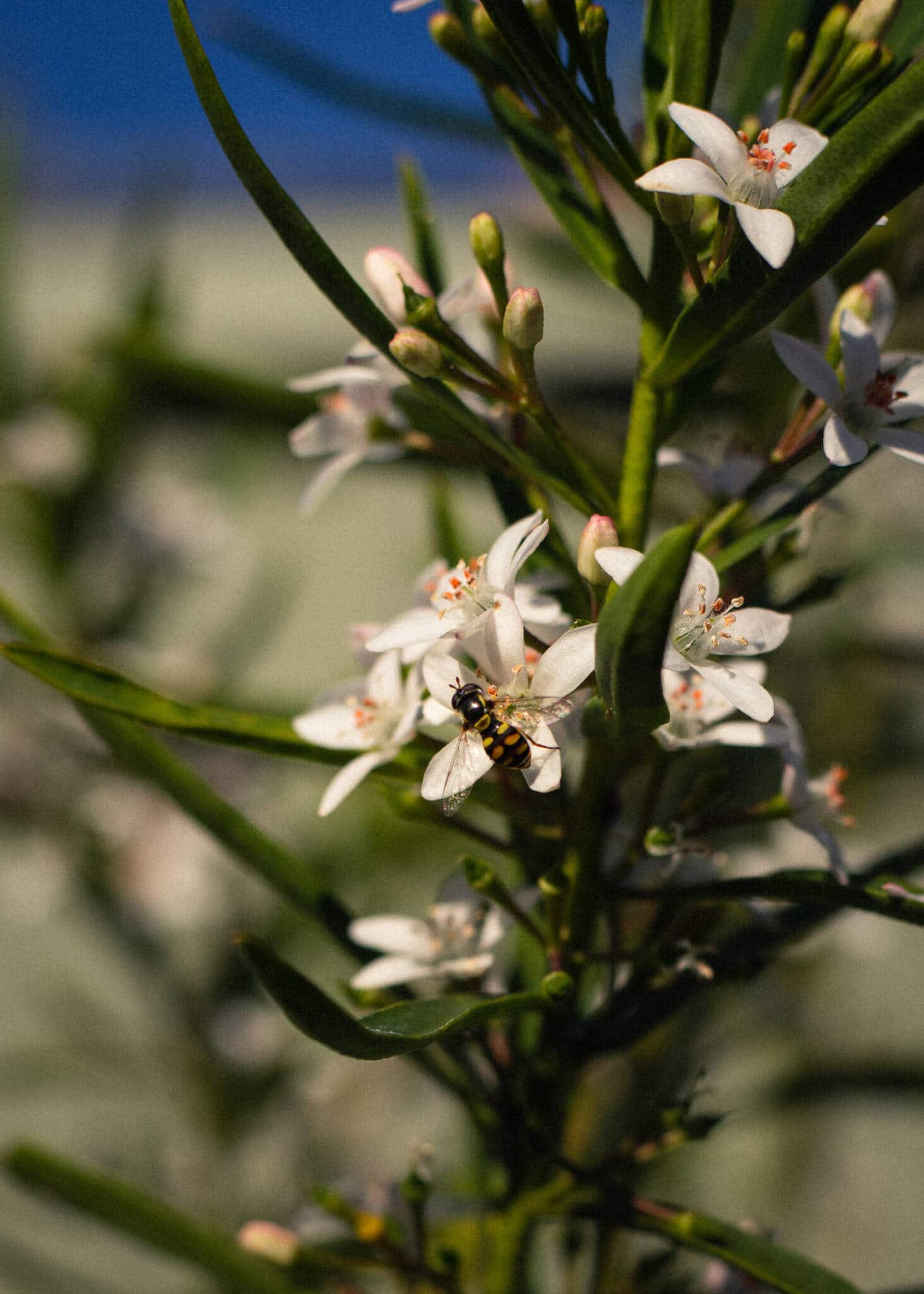
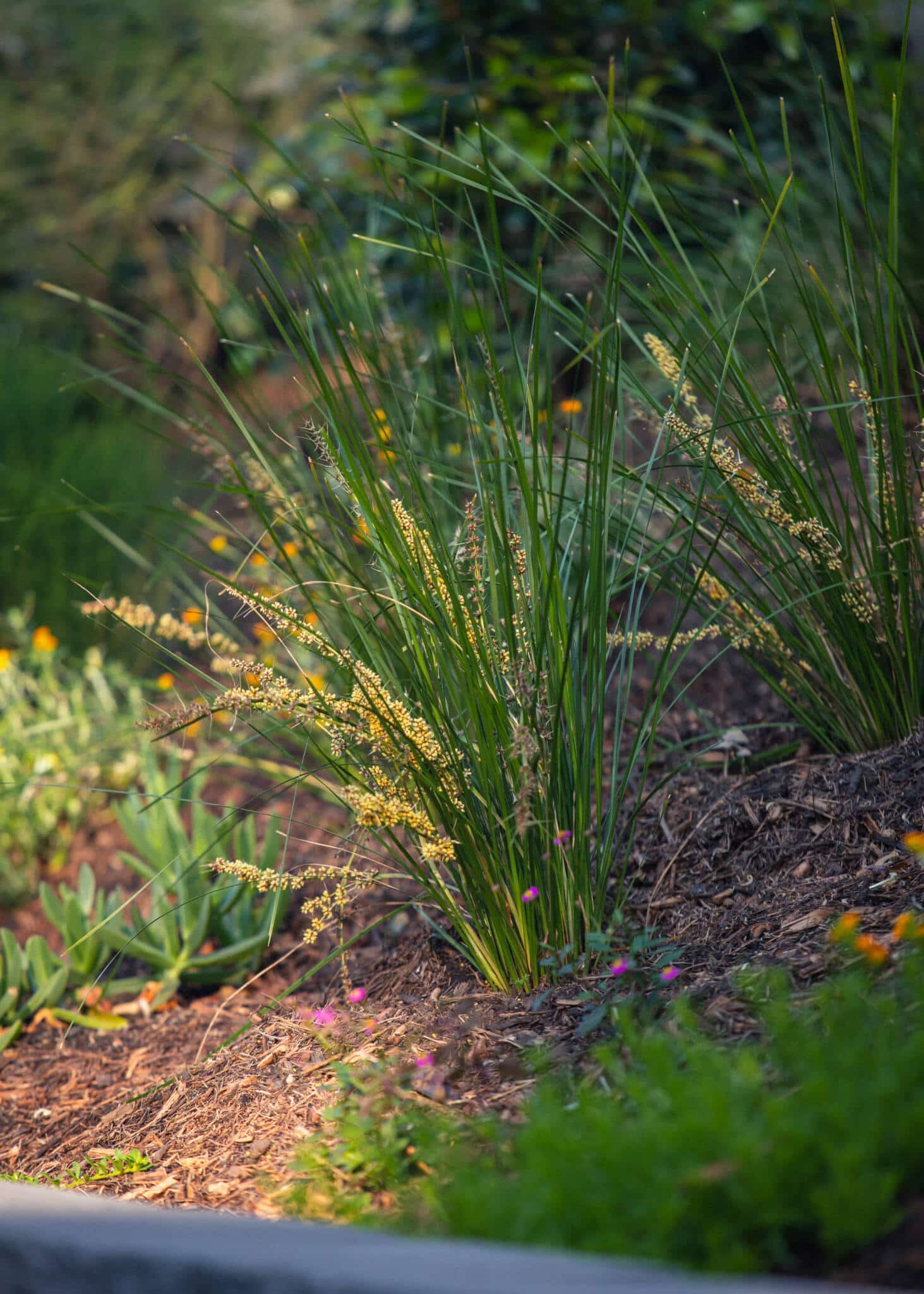
2. Plant for the Pollinators
If you want to bring more life into your garden, start by planting for the pollinators.
Pollinating insects, like bees, butterflies and hoverflies, are the backbone of any thriving ecosystem. Fill your garden with plants that attract them. Think native shrubs and trees like Bottlebrush and Grevilleas. Kunzea and Hakea. Flowering native grasses like Lomandra.
The key here is to choose varieties that flower at different times of the year to provide a consistent food source. Depending on where you live, you might need to plant some non-natives to fill the gaps between seasons when the natives are not flowering.
Actionable Tip: Research plants native to your area that are known to attract pollinators. Look for types that flower during different seasons. Your local council website will have a section sharing detailed planting guides with species indigenous and endemic to your area. Also, check out your councils’ free native plants programs. Most councils in Australia offer free native plants, seedlings and tube stock to homeowners each calendar year.
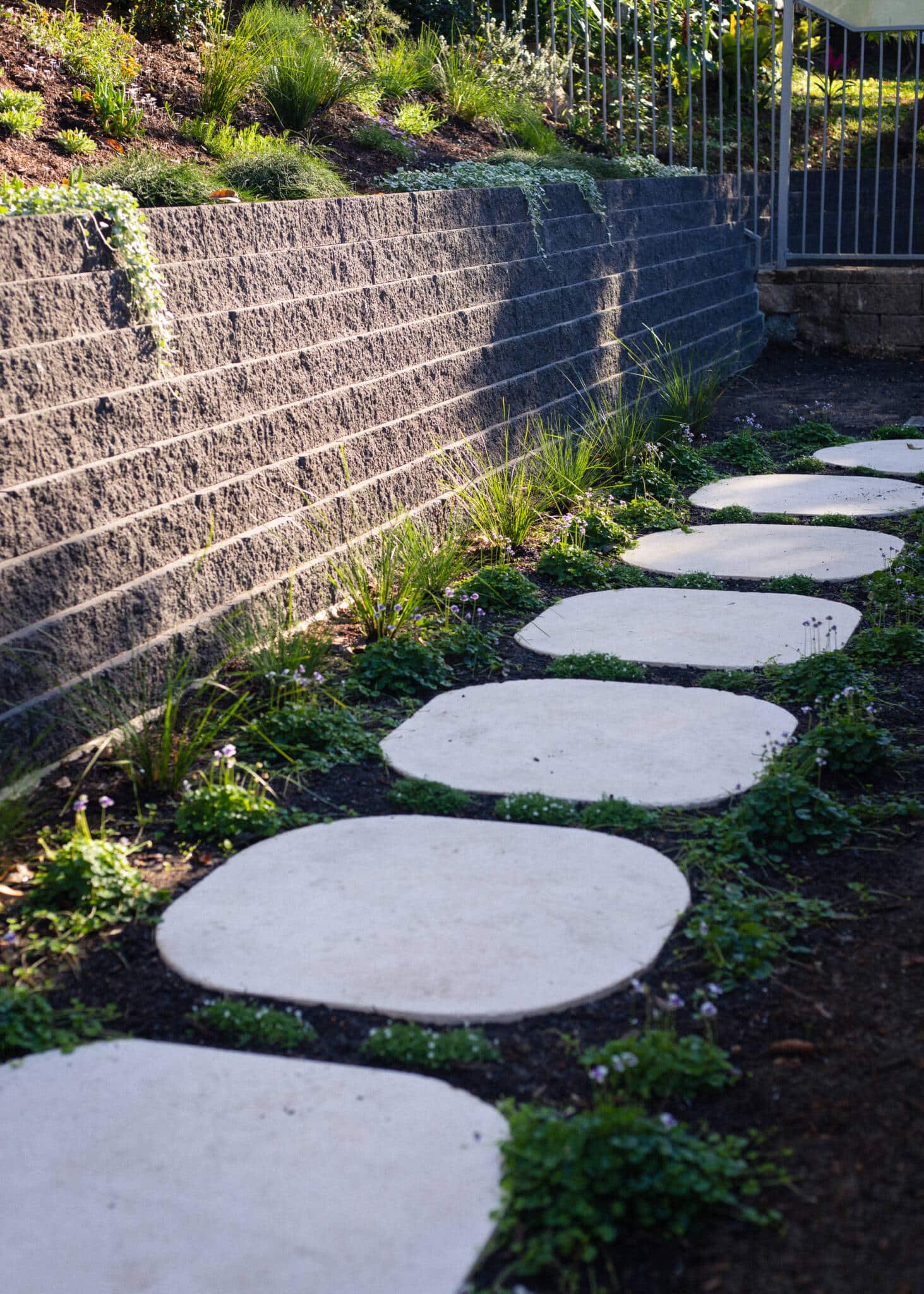
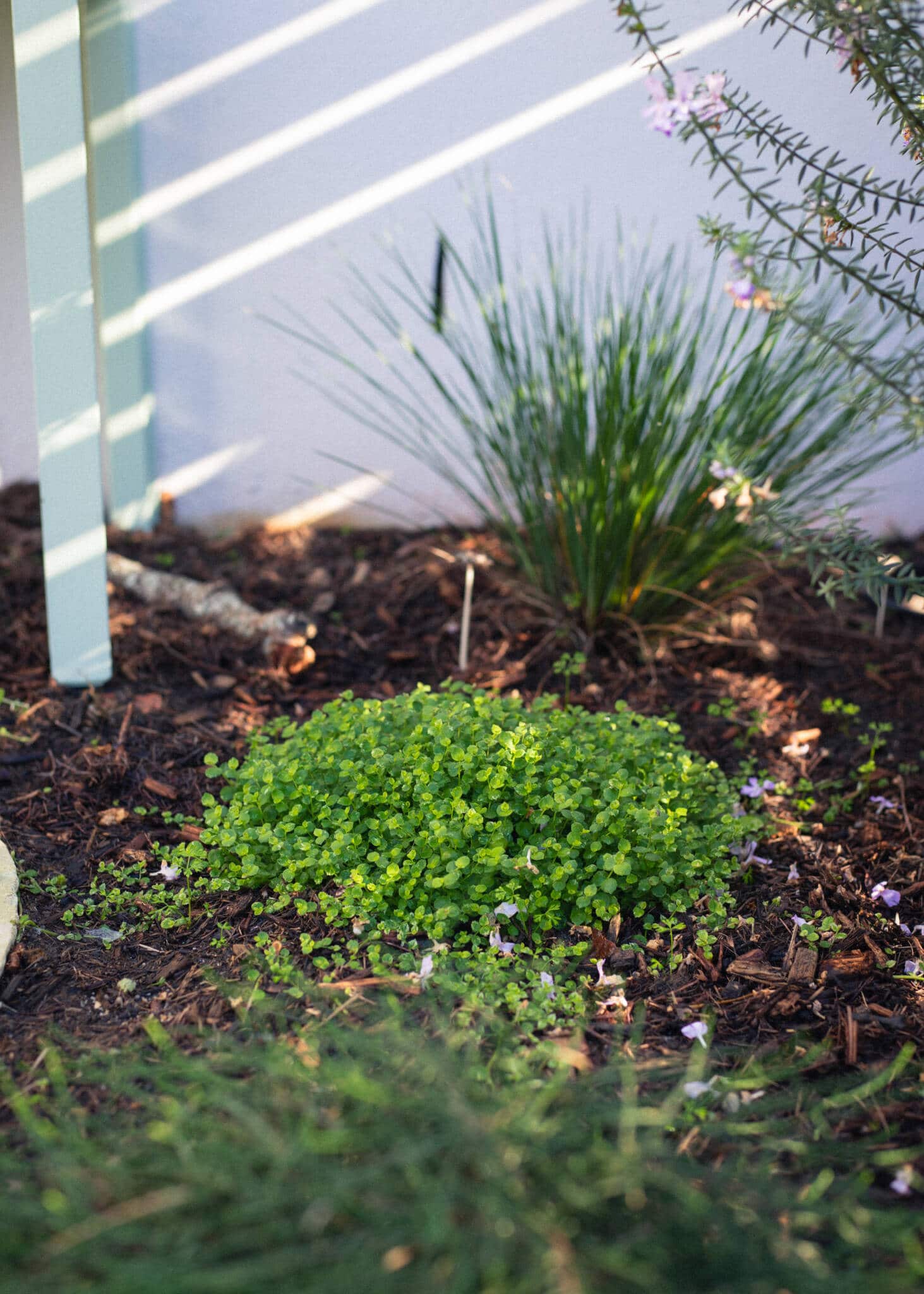
3. Ditch the Lawn (Or at Least Some of It)
Lawns require a lot of water (and often chemical fertilisers and weed killer) to maintain, and they don’t offer much to support wildlife.
Start by reducing the size of your lawn and replacing sections with native grasses or ground covers. Lomandra and Myoporum are great options for low-maintenance, drought-tolerant alternatives and are better suited to Australia’s unique climate and vegetation. Replacing even a small part of your lawn with native plants can drastically improve the biodiversity of your garden.
Actionable Tip: You don’t need to get rid of your whole lawn straight away. Start by converting a small section into a wildflower meadow or plant native ground covers like Kangaroo grass or Lomandra. These require less water and create a habitat for insects and small creatures. Alternatively, consider installing low-maintenance ground covers like Myoporum or Viola. Sustainable Gardening Australia has some excellent advice on replacing lawns.
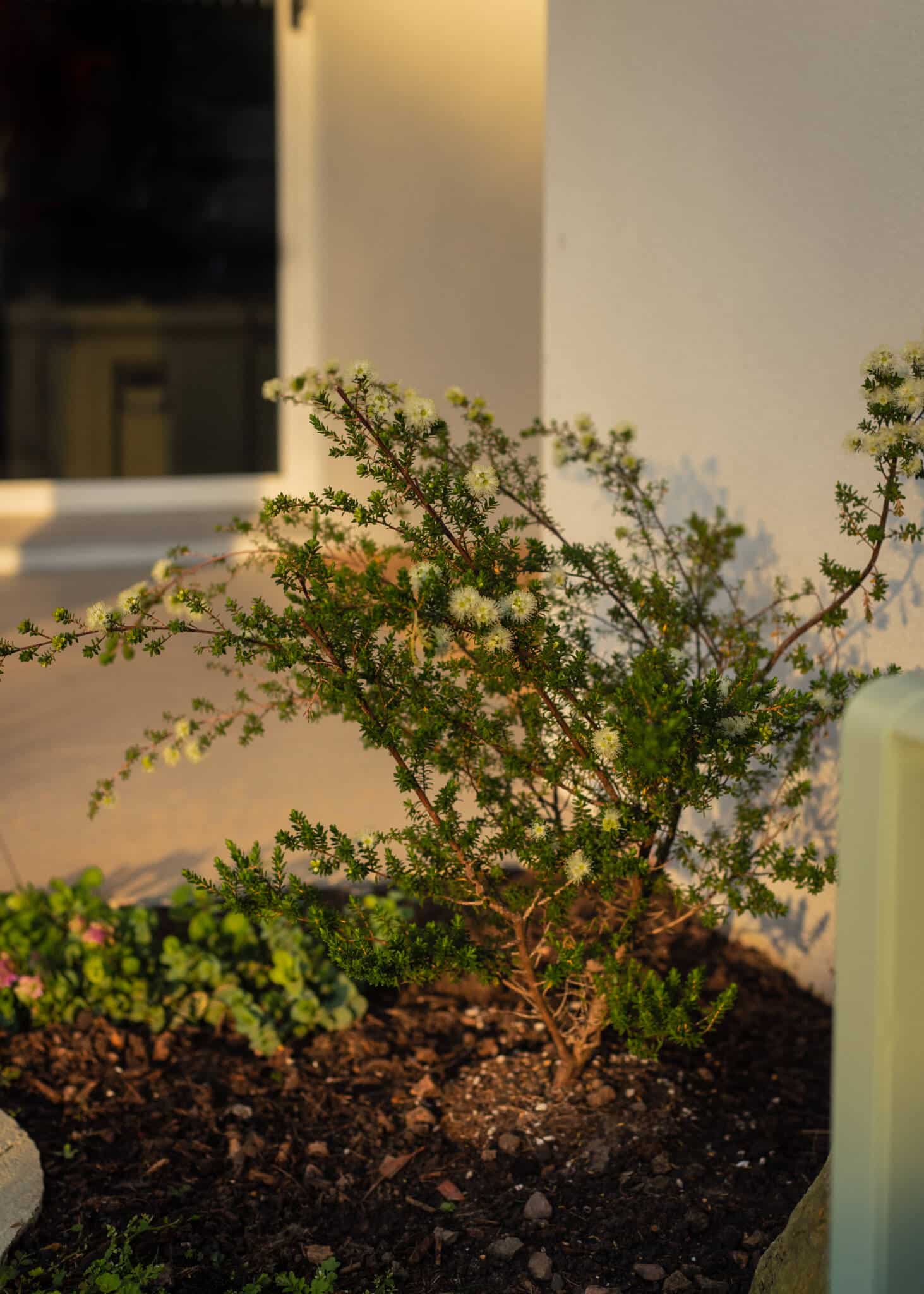
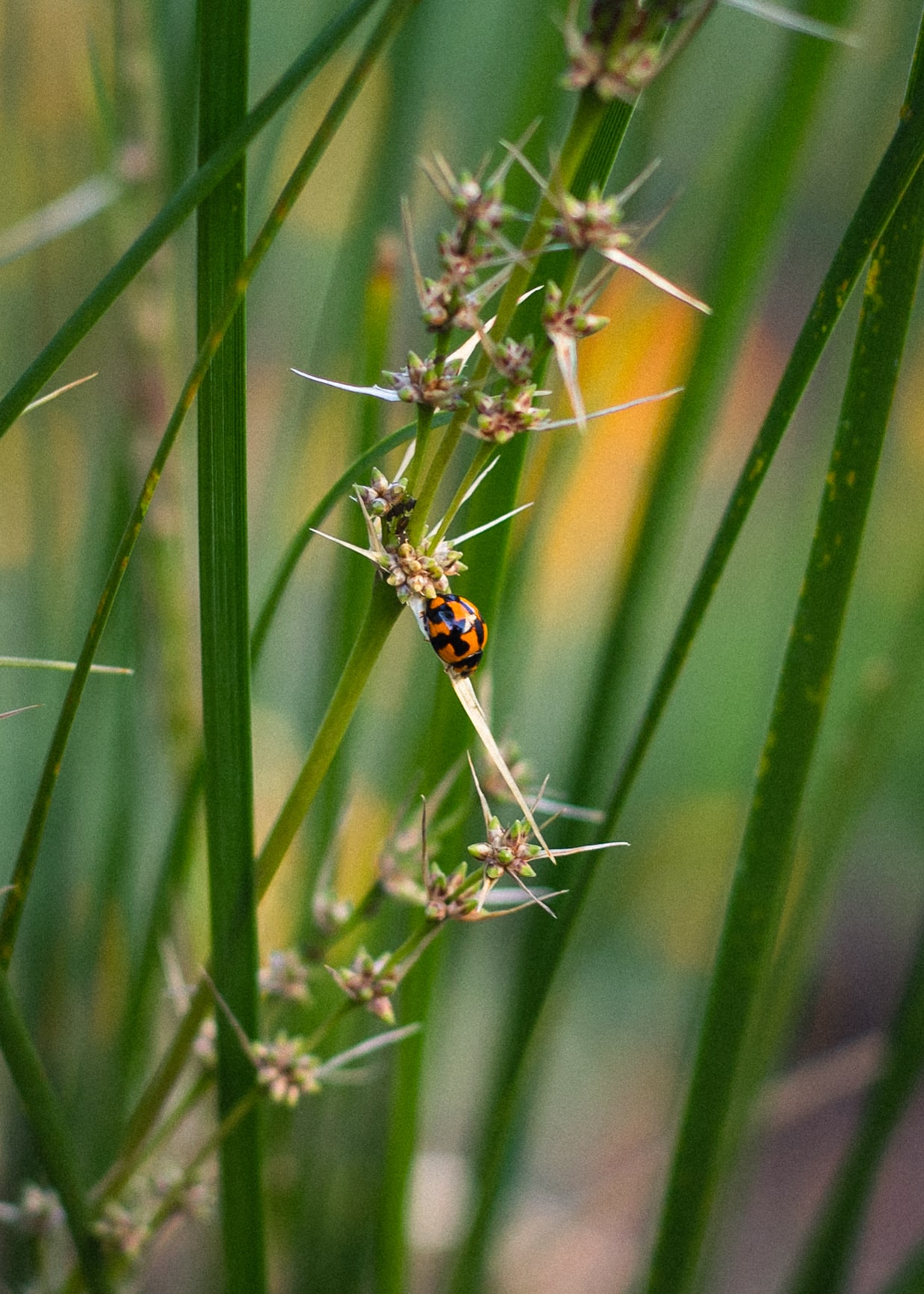
4. Build a Habitat
Wildlife needs three basic things. Food, water, and shelter.
Plant dense shrubs for shelter and leave some dead wood around, which is great for beetles and insects. Lizards love long grasses, small birds like denser shrubby bushes like Banksia. And remember, mess is okay! A tidy garden is not always a wildlife-friendly one. Gardens that mimic natural habitats are more likely to support a wider range of wildlife.
Actionable Tip: Create layers of habitat in your garden. Include tall shrubs, ground covers, and mid-level plants to offer protection and food for different animals. If space allows, adding a small pond can attract frogs and dragonflies. Even a simple birdbath can make a big difference for local birds. Also, leave areas of your garden a bit wild, with leaf litter and logs for insects and small creatures.
Check out the Wildlife Friendly Gardens guide by Backyard Buddies, which explains how to attract wildlife to your garden, including birds, frogs, and butterflies.
5. Connect with Your Neighbours
Rewilding is even more powerful when done collectively.
One of the key principles of rewilding is creating connected green spaces.
Chat with your neighbours about planting natives. If they’re on board, you can start setting up wildlife corridors or creating a patchwork of rewilded spaces. This kind of community effort can lead to healthier neighbourhoods for both you and the wildlife you’re hoping to attract.
Actionable Tip: Start by having conversations with your neighbours about rewilding and wildlife corridors. Suggest planting the same native trees or shrubs along the fence line can create a corridor for birds and insects to move freely. If your community is enthusiastic, you could even host a neighbourhood planting day!
The Land for Wildlife program is a great initiative that encourages people to create wildlife habitats on their properties, and they offer advice for creating connected green spaces.
Getting started
Throughout my own journey of rewilding my backyard, I’ve learned something: when the bigger picture gets too daunting, it helps to zoom in and focus on one small area. When I stand back and look at the garden area as a whole (all nine areas), it’s too much. But focus on one small task, suddenly, it’s all much more doable.
So, if you’re in the same boat, wanting to rewild your backyard, consider this your gentle nudge. Don’t let the enormity of your project stop you—just start with what’s in front of you. One small patch at a time.

Want to create a pollinator-friendly garden?
Our 40-page guide is designed for Australian gardeners who want to support native species but aren’t sure where to start.
You’ll find:
- The native bees, butterflies, flies, beetles and birds you’re most likely to see and how they use our gardens.
- The plant families and flower types that reliably support a mix of species
- The pressures pollinators face, and why our backyard gardens are more important than ever
- Why most commercial bee hotels don’t work, and how to make simple, safe alternatives
- How to plant a habitat garden with layers and seasonal continuity
- Trusted resources, websites and citizen-science projects if you want to explore further
